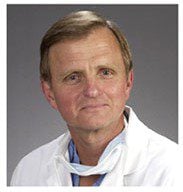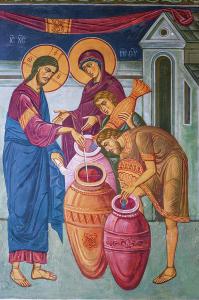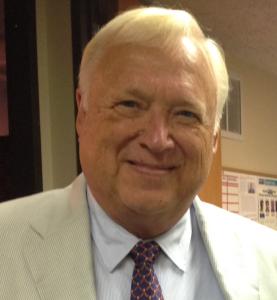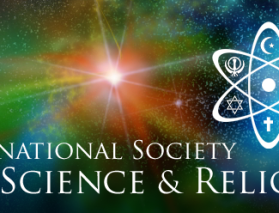How to see a miracle?
ST 4141 Miracles 1

How to see a miracle? Are miracles objective and real? Or, are miracles subjective, only wishful thinking?
This question is important. One of the main reasons Jesus was popular in ancient Palestine was that he had a reputation as a miracle worker. People from all around would bring their sick relatives to get healed. The more people Jesus healed, the more popular he became. So, let’s get straight on what a miracle is.
To begin our Patheos series on miracles, let me tell you a story. Here is the question to which this story speaks: how to see a miracle?
How to see a miracle?
This story begins in 2009. That year I served as a guest professor at St. Olaf College in Minnesota. I sat in the Martin E. Marty Chair in Religion in the Academy. It’s not actually a chair. I stood up in front of the class to lecture.
As part of my lectureship, I sponsored some all-campus conferences. One included Martin Marty himself, to be sure. Marty lectured on science and religion in American history.
But the conference I want to tell you about featured Chris Impey, an astrobiologist from the University of Arizona, and Paul Lange from the University of Washington Medical School in Seattle. The topic: science and religion.
A large audience of students and faculty attended. A student rock band entertained between lectures. What Chris and Paul said resonated with everyone. It was a good day by all measures.

Important for our question—how to see a miracle?—is the informal conversation following dinner with faculty and students. I could tell by the glint in Paul’s eye that he was about to launch into something mischievous.
“So, Ted,” said Paul followed by a pause long enough to draw the attention of all those within hearing distance, “what’s this stuff about miracles? Are there such things? I’ve been a surgeon for thirty-five years, and I’ve never seen a miracle. I bet they don’t ever happen.”
I took the bait. “Well, Paul, let me ask you about your surgeries. Did you ever have a cancer patient whom you’d given up on? Your prognosis was death. Then, this patient’s family gathered to pray for healing. And those earnest prayers resulted in a healing. The patient survived. Perhaps the patient even went on to live a normal life. Did anything like that every happen to you?”
“Well, yes,” he murmured.
“How often? Once? Twice?” I asked.
“Oh, more than that,” he responded. “At least a dozen times. Maybe fourteen.”
Now, I thought I had him. “So, you witnessed a dozen perhaps even fourteen miracles. But you sit here and tell me that you never saw a miracle. I don’t get it.”
“No, those were not miracles,” he responded.
“If those were not miracles, then what do you call them?”
“Freaks,” he said.
“Freaks!” I exclaimed. “Is ‘freak’ a scientific term?”
“Well, yes. Freaks. Anomalies. You know what I mean,” he muttered.
I promulgated, “Paul, if you call these astonishing healing moments ‘freaks’, then you’ll never see a miracle.”
Well, I thought I’d won that argument decisively. Even if an objective event of divine healing would take place right before our eyes, we could dismiss God’s grace by simply giving it a prosaic name such as ‘freak’ or ‘anomaly’ or something on this order. Only if our eyes are open and willing to see, said Jesus repeatedly, will we discern God’s activity in our lives.
The Traumatic Diagnosis: Prostate Cancer
The story continues. While still in Minnesota in 2009, I had the opportunity to get a workup at the Mayo Clinic. The diagnosis: advanced prostate cancer.
I recall fretting in tears when I dialed Paul’s phone number. This existential crisis hit me like an atomic bomb.
Now, why would I call Paul? Because Paul Lange, urologist and oncologist, is one of the world’s leading scientists in the field of prostate cancer. As a research professor at the University of Washington Medical School and the Fred Hutchinson Cancer Center, Paul developed the PSA (Prostate-Specific Antigen) Test used the world over. The physician at the Mayo Clinic who gave me the diagnosis was formerly one of Paul’s students. So, I telephoned the master.
We arranged for me to fly to Seattle where Paul heroically operated—a radical prostatectomy—at the UW hospital. He said he “got it all.” Or, he “hoped he got it all.”
The healing process was long and complicated. But I will spare you the kind of medical details that I find very boring at cocktail parties. In short, I eventually recovered and today I live a normal life. Well, not if you ask my neighbors.
A half decade later

Maybe the year was 2016 or so. My wife, Karen, and I were in Seattle. Paul Lange drove us to a seafood restaurant for a fresh salmon lunch. As we were closing the car doors in the parking lot, Paul exclaimed, “Ted, you’re a miracle!”
“What?” I asked. The three of us gathered around the parked car for a pre-lunch conversation.
“You’re a miracle,” Paul repeated.
“What do you mean?” I pressed.
“Because, statistically, of patients with cancer as severe as yours, only 5% are alive after five years. You’re alive,” he said again. “You’re a miracle.”
Because Paul is a scientist, I noticed over the years how he regularly read journals and loved to invoke statistical studies in his research.
“Oh, Paul,” I cajoled. “I’m not a miracle. Those are just statistics.”
“Ted,” Paul responded with a sly grin, “if you use the word, ‘statistics’, you’ll never see a miracle.”
Conclusion
A miracle seems to have both an objective and subjective component. Maybe this is why Jesus so frequently asked rhetorically, “Do you have eyes but fail to see, and ears but fail to hear?” (Mark 8:18)
There’s more to come in this series on miracles.
Patheos ST 4141 How to see a miracle? Miracles 1
Patheos ST 4142 Two Healing Miracles for Sainthood. Miracles 2
Patheos ST 4143 Hume on Miracles. Miracles 3
Patheos ST 4144 Is Special Divine Action miraculous? Miracles 4
Patheos ST 4145 Jesus’ Nature Miracles. Miracles 5
Patheos ST 4146 Is resurrection the ultimate miracle? Miracles 6
Patheos ST 4147 The proleptic power of new creation. Miracles 7
Patheos ST 4148 Paul Lange on Miracles. Miracles 8
Patheos ST 4149 C.S. Lewis on Miracles. Miracles 9
▓

For Patheos, Ted Peters posts articles and notices in the field of Public Theology. He is a Lutheran pastor and emeritus professor at the Graduate Theological Union. He co-edits the journal, Theology and Science, with Robert John Russell on behalf of the Center for Theology and the Natural Sciences, in Berkeley, California, USA. His single volume systematic theology, God—The World’s Future, is now in the 3rd edition. He has also authored God as Trinity plus Sin: Radical Evil in Soul and Society as well as Sin Boldly: Justifying Faith for Fragile and Broken Souls. See his website: TedsTimelyTake.com.
Watch for his new 2023 book, The Voice of Public Theology, published by ATF Press.
▓

















